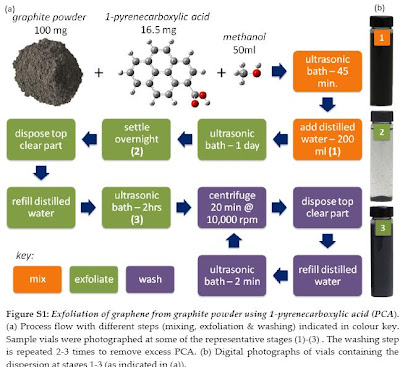What have honeycomb, chicken wire and popcorn got to do with the next generation of super-fast computers and electronic devices? They are ways of describing graphene, a material found in your everyday pencil that is being hailed as a possible successor to silicon, the principal component of most semiconductor devices.
While silicon has served industry well, many believe it has reached its limits in terms of speed and efficiency Relevant Products/Services. As one industry expert put it: "Silicon is stuck in the gigahertz range."
Less than 5 years ago, researchers discovered that graphene was extraordinarily good at conducting electricity. It is a form of carbon consisting of layers one atom thick densely packed in a honeycomb crystal lattice. Its composition is also described as atomic-scale chicken wire, made of carbon atoms and their bonds.
Not only is it extremely effective, it actually gets better as it gets smaller, which is one of the reasons it is being hailed as the Next Big Thing in nanotechnology. Indeed, the prestigious Massachusetts Institute of Technology (MIT) included graphene on its widely read "10 emerging technologies" list for 2008.
Meanwhile, the semiconductor industry has publicly stated that its aim is to dramatically reduce the size of the circuits on the silicon wafer by 2020, meaning anyone coming up with alternatives stands to make huge profits.
Early research was focused on the development of carbon nanotubes sheets of graphene rolled up into cylinders to deliver high conductivity. However, it soon became clear that the tubes were difficult to manage, sort and position in exactly the right way to produce complex circuits. It was generally agreed that graphene sheets were the way to go, and the race was on to be the first to refine the process.
In April 2008 the BBC reported that Dr Kostya Novoselov and Prof Andre Geim from The School of Physics and Astronomy at The University of Manchester were the first to separate a sheet of the material from graphite. They had built the world's smallest transistor -- one atom thick and 1 0 atoms wide out of graphene.
Kostya told the BBC that graphene was a "wonderful conductor", making it a perfect material for chip applications. "It is already superior to silicon by an order of magnitude and comparable to the best samples of other materials," he said. "We believe we can increase this mobility of electron flow tenfold."
While graphene is clearly big news, the real story here is that Australian researchers have made one of the biggest breakthroughs of all, developing a new method -- dubbed the popcorn effect -- of manufacturing graphene sheets, making it far cheaper and easier to produce in bulk.
Currently, graphene is painstakingly and expensively produced by ripping layers of carbon from a piece of graphite using adhesive tape -- the so-called "Scotch Tape" method. Mohammad Choucair, Pall Thordarson and John Stride from the University of NSW School of Chemistry stumbled on the new method while trying to make carbon nanotubes.
"We were as surprised as anyone," Stride said. "Only when we analyzed this material did we realize that we had obtained carbon sheets. We then, of course, went back and repeated the procedure time and time again to optimize the approach."
What they found was that sodium metal reacts with ethanol under pressure, leaving a powdery white residue. The powder contains tiny pockets of ethanol. When it is heated rapidly it expands in what Stride described as the "popcorn effect", which appears to decompose the material down to elemental carbon. The resulting fused array of graphene sheets is then dispersed by agitation with ultrasound.
"The most crucial aspect of the synthesis is the pyrolysis step, and we have perfected this after many attempts," he said. "The trick is to obtain an optimal power Relevant Products/Services density within the sample while heating. This avoids charring or the production of graphitic lumps. In terms of scalability, an automated process could be envisaged given what we now know about the process."
source



















































